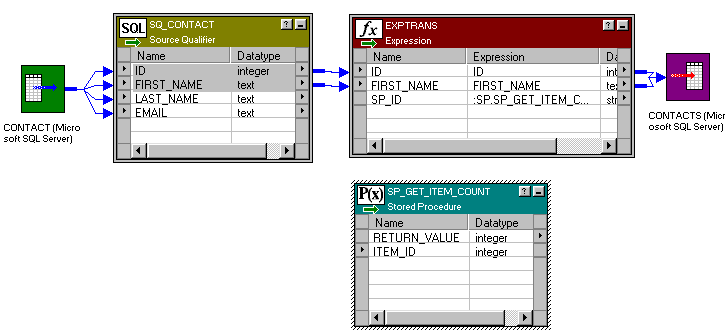You must know whether the parameters shown in the Expression Editor are input or output parameters. You insert variables or port names between the parentheses in the order that they appear in the stored procedure. The datatypes of the ports and variables must match those of the parameters passed to the stored procedure.
For example, when you click the stored procedure, something similar to the following appears:
:SP.GET_NAME_FROM_ID()
This particular stored procedure requires an integer value as an input parameter and returns a string value as an output parameter. How the output parameter or return value is captured depends on the number of output parameters and whether the return value needs to be captured.
If the stored procedure returns a single output parameter or a return value (but not both), you should use the reserved variable PROC_RESULT as the output variable. In the previous example, the expression would appear as:
:SP.GET_NAME_FROM_ID(inID, PROC_RESULT)
inID can be either an input port for the transformation or a variable in the transformation. The value of PROC_RESULT is applied to the output port for the expression.
If the stored procedure returns multiple output parameters, you must create variables for each output parameter. For example, if you create a port called varOUTPUT2 for the stored procedure expression, and a variable called varOUTPUT1, the expression appears as:
:SP.GET_NAME_FROM_ID(inID, varOUTPUT1, PROC_RESULT)
The value of the second output port is applied to the output port for the expression, and the value of the first output port is applied to varOUTPUT1. The output parameters are returned in the order they are declared in the stored procedure.
With all these expressions, the datatypes for the ports and variables must match the datatypes for the input/output variables and return value.

